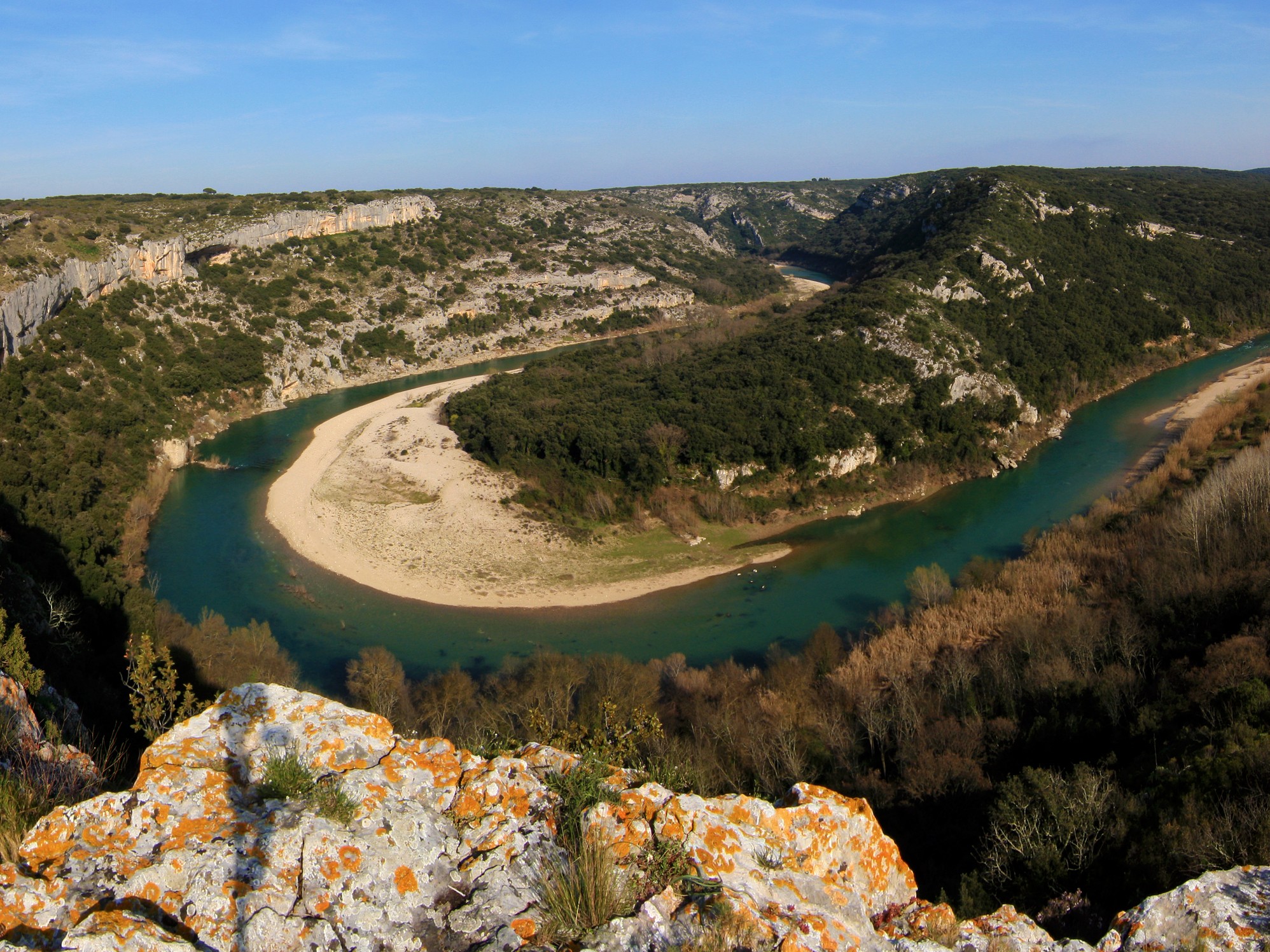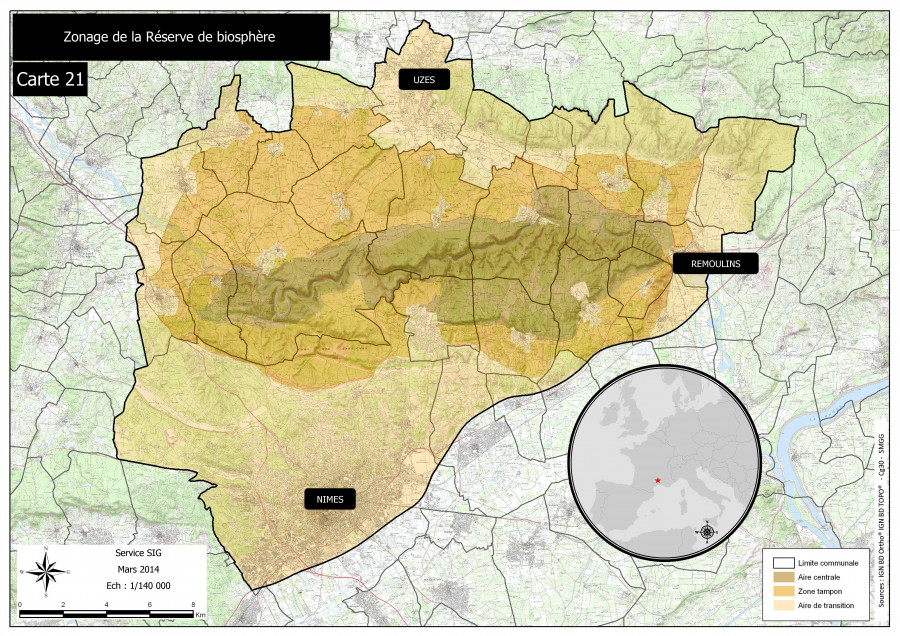Introduction
Within the limestone plateaus of Languedoc, the Gardon has carved its gorges over some thirty kilometres wandering through the Mediterranean landscape of the Uzège. Named after the Gard department, the river was born in the Cévennes valleys. It then crosses the Gardonnenque plain, the karst massif north of Nîmes and ends its journey by flowing into the Rhône.
 The Gardon Gorges Biosphere Reserve covers more than 45,000 hectares, combining garrigues, agricultural plains and oak forests, bordered by an urban area of more than 250,000 inhabitants.
The Gardon Gorges Biosphere Reserve covers more than 45,000 hectares, combining garrigues, agricultural plains and oak forests, bordered by an urban area of more than 250,000 inhabitants.
The Gorges du Gardon are a biodiversity hotspot whose preservation the public authorities wished to guarantee by introducing various legislative measures in the 1980s, such as the classification of the site according to the law of 2 May 1930 and a part of it as a Regional Nature Reserve.




